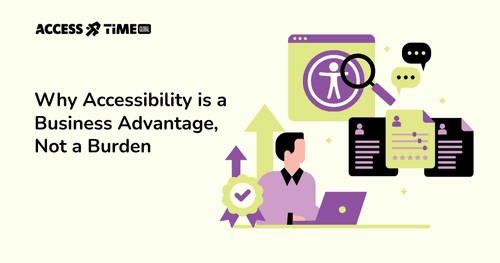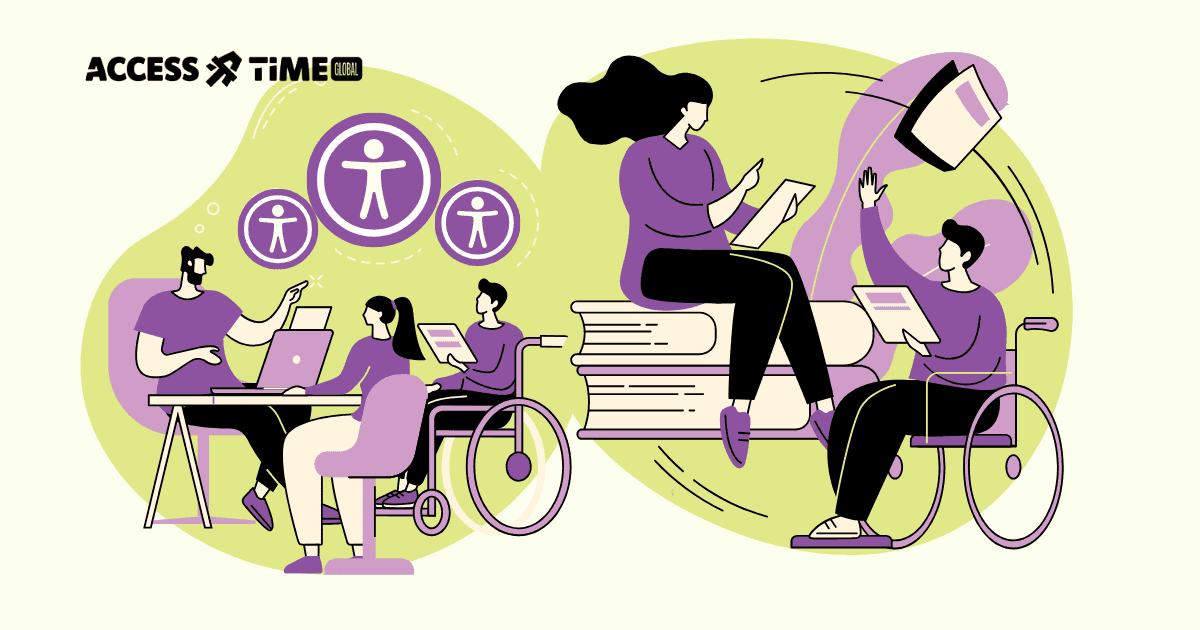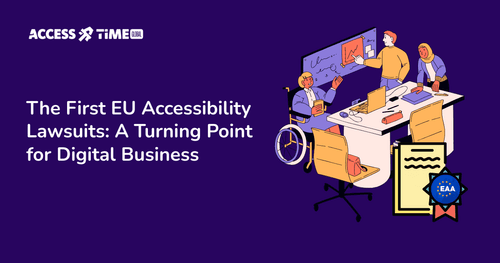Why Accessibility is a Business Advantage, Not a Burden
Prasaja Mukti - Accessibility UX Writer
●●
When teams first bring up accessibility, the conversation usually starts with: “Accessibility is important, but we’re already stretched thin. Can this wait until next quarter?” It’s a common perspective, and one we know well from companies across the industry.
We at AccessTime acknowledge it. When you're juggling product launches, customer demands, and quarterly targets, accessibility can feel like another item on an already overwhelming to-do list. And from what we've learned after helping dozens of companies integrate accessibility into their workflows, the teams that embrace accessibility early don't just avoid problems, along the way they also unlock competitive advantages that their competitors are missing.
Let us share why accessibility isn't beyond good ethics, it's also smart business strategy.
The Market Opportunity You're Already Missing
Let's start with numbers that might surprise you. People with disabilities control over $13 trillion in annual disposable income globally. In the US alone, that's $490 billion annually—roughly equivalent to Belgium's entire GDP.
It's not just about direct purchasing power. When someone can't use your product because it's inaccessible, you're not losing just one customer. You're losing someone who influences family members, friends, and their professional networks. In our experience working with clients, accessibility barriers that block individual users also create ripple effects that impact brand perception across entire communities.
The disability market is also remarkably loyal. When people find products that work well with their assistive technology or accommodate their needs, they stick around.
They become advocates. They recommend you to others facing similar challenges.
We've seen clients experience this firsthand. Once they make their products genuinely accessible, they often gain customers who become their most enthusiastic promoters.
The SEO Goldmine Most Teams Miss
Here's something that gets every marketing team's attention. Many accessibility practices directly improve your search engine rankings.
Here’s a fun fact. When your website is properly accessible, AI search engines can actually index and surface your content more effectively. And with the way people search shifting (let’s be honest, many are using ChatGPT as much as—or more than—Google) accessibility also makes your site easier to be found in this new landscape.
Search engines are essentially sophisticated screen readers because they can't see your beautiful design or interpret your clever animations. They read your HTML structure, your alt text, your headings, and your content hierarchy.
Sound familiar? That's exactly what screen readers do too.
When you write descriptive alt text for images, you're helping both visually impaired users and search engines understand your visual content. When you create proper heading structures, you're making content easier to navigate with assistive technology while helping search engines understand your content hierarchy and topic relevance.
We've worked with clients who saw significant SEO improvements after implementing accessibility best practices. Better semantic HTML, clearer content structure, and more descriptive link text that serve users with disabilities, they also serve search algorithms too.
It's a win-win that many companies don't realize they're missing.
The Performance Connection That Drives Conversions
Accessible websites tend to be faster, and faster websites make more money. Here's why accessibility and performance go hand in hand.
Accessibility best practices often lead to cleaner, more efficient code.
- When you focus on semantic HTML, you end up with leaner markup.
- When you prioritize keyboard navigation, you often simplify JavaScript interactions.
- When you ensure your site works without complex visual effects, you create more robust, faster-loading experiences.
But the benefits extend beyond technical performance. Accessible design principles naturally lead to simpler, more focused interfaces that convert better.
Amazon famously calculated that a 100-millisecond delay in load time costs them 1% in sales. When accessibility practices contribute to faster, more efficient websites, they're directly contributing to better business outcomes.
Building Unshakeable Brand Loyalty

Accessible experiences create loyalty that goes deeper than brand perception.
When users feel genuinely considered and welcomed by your product regardless of their abilities, they develop emotional connections that are hard to break. This is especially powerful in competitive markets where functional differences between products are minimal.
Companies that embrace accessibility often attract employees who care about inclusive values, creating cultures that naturally produce more thoughtful, user-centered products and services. It becomes a positive feedback loop that strengthens everything from hiring to customer satisfaction.
The Risk Management Perspective
And finally, let's be practical about the legal landscape. Accessibility lawsuits are increasing, and they're expensive to defend, regardless of outcome. But the business risks of inaccessible products extend beyond legal compliance.
Inaccessible products create customer service burdens, limit market opportunities, and can damage brand reputation in ways that are difficult and expensive to recover from. When you invest in accessibility proactively, you're building resilience that serves your business in multiple ways.
Measuring Business Impact
So how do you translate accessibility into concrete business value?
We at AccessTime help our clients track metrics that matter to their organizations.
We also encourage clients to monitor support tickets, since many usability issues that generate customer service requests are actually accessibility problems in disguise. When you solve for accessibility, you often reduce support burden across the board.
Build Your Competitive Advantage
The companies that will thrive in the coming years are those that understand inclusive design isn't separate from good business, but fundamental to it. They're capturing markets their competitors miss, building stronger customer relationships, and creating products that stand the test of time.
If you're curious about the business impact accessibility could have for your organization, we'd love to help you explore the possibilities. Access Lens, our beta assessment tool, can help you understand both current opportunities, FREE without any pressure or commitment.
For leadership teams ready to make accessibility a strategic differentiator, AccessTime offers consultancy services designed specifically for organizations serious about turning inclusive design into competitive advantage.
Accessibility is an advantage you build. And we're here to help you build it.
Ready to explore what accessibility could mean for your business? Try Access Lens for a comprehensive look at your opportunities, or visit our contact page to discuss how AccessTime can help transform accessibility into your competitive edge.
Contact Us
Ready to explore how accessibility can transform your products? Visit our contact page to learn more about AccessTime consultancy services, or try Access Lens to get started with a fresh perspective on what's possible.
Share:

